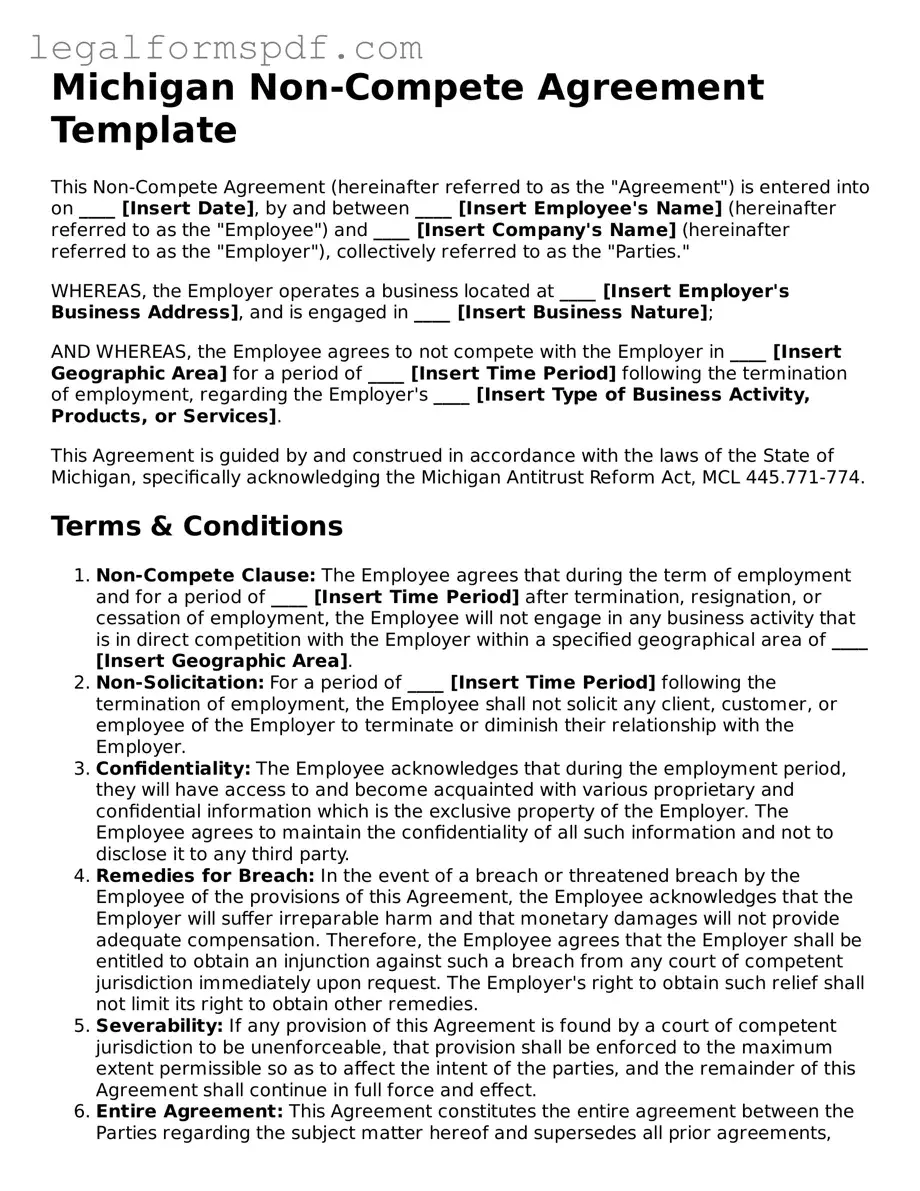A Non-Disclosure Agreement (NDA) is one document closely resembling the Michigan Non-Compete Agreement, with both focusing on protecting business interests, albeit in slightly different manners. While a Non-Compete Agreement restricts a person’s ability to engage in competing business activities for a certain period and within certain geographic areas after ending an association with a business, an NDA specifically prohibits the sharing of proprietary business information. Both agreements serve to safeguard a company's competitive edge, yet they target different aspects of business protection.
An Employment Agreement often incorporates elements found in a Non-Compete Agreement, particularly clauses intended to protect a business once the employment relationship ends. Similar to a Non-Compete, an Employment Agreement might specify conditions related to the employee's responsibilities, compensation, and grounds for termination. However, it goes broader, covering the entire scope of the employment relationship, whereas a Non-Compete Agreement specifically focuses on post-employment conduct relating to competition and solicitation.
Independent Contractor Agreements, much like Non-Compete Agreements, are used when businesses engage with freelancers or consultants. These agreements can include non-compete clauses to prevent contractors from using insights gained during their engagement to compete against the company. Nonetheless, the primary distinction lies in the relationship status; Independent Contractor Agreements define the terms under which services are provided by non-employees, focusing on project-based engagements without the benefits or long-term commitment of employment.
A Confidentiality Agreement, akin to a Non-Compete Agreement, is crafted to protect sensitive information. However, its primary aim is to prevent the disclosure of information deemed confidential, not necessarily to limit competitive practices post-employment or engagement. This type of agreement is crucial in situations where sharing of proprietary knowledge is essential to a business arrangement but needs to be controlled and confined to the agreed parties.
Sale of Business Agreements may include clauses similar to those in Non-Compete Agreements to prevent the seller from starting a new, competing business that could undermine the value of the sold business. These agreements are broader, detailing the terms of the sale, assets being transferred, and potential warranties. Yet, the non-compete aspect ensures the buyer receives the full benefit of the acquisition without the risk of immediate competition from the seller.
Franchise Agreements often incorporate non-compete clauses, mirroring the specific concern of a Non-Compete Agreement to protect the franchisor's brand and operating model. These agreements regulate the franchisee's use of trademarks, operational practices, and engagement in activities that could directly compete with or harm the franchise. While focusing on the franchisor-franchisee relationship, the inclusion of non-compete clauses underlines the intent to safeguard the franchise network's integrity and value.
Partnership Agreements can also bear resemblance to Non-Compete Agreements when they include provisions aimed at preventing partners from engaging in outside business activities that could directly compete with or jeopardize the partnership’s interests. These agreements lay down the governance structure, capital contributions, profit distribution, and operational roles of each partner, blending the protection of business interests with the framework for the partnership’s overall operation and management.
Lastly, Severance Agreements might contain components of a Non-Compete Agreement, particularly when they include stipulations that restrict the departing employee's ability to compete against the former employer for a specific time frame. Typically provided in exchange for a severance package, these agreements help ensure that a company mitigates the risk of competitive threats post-employment, while also providing the departing employee with compensation and possibly other benefits.
